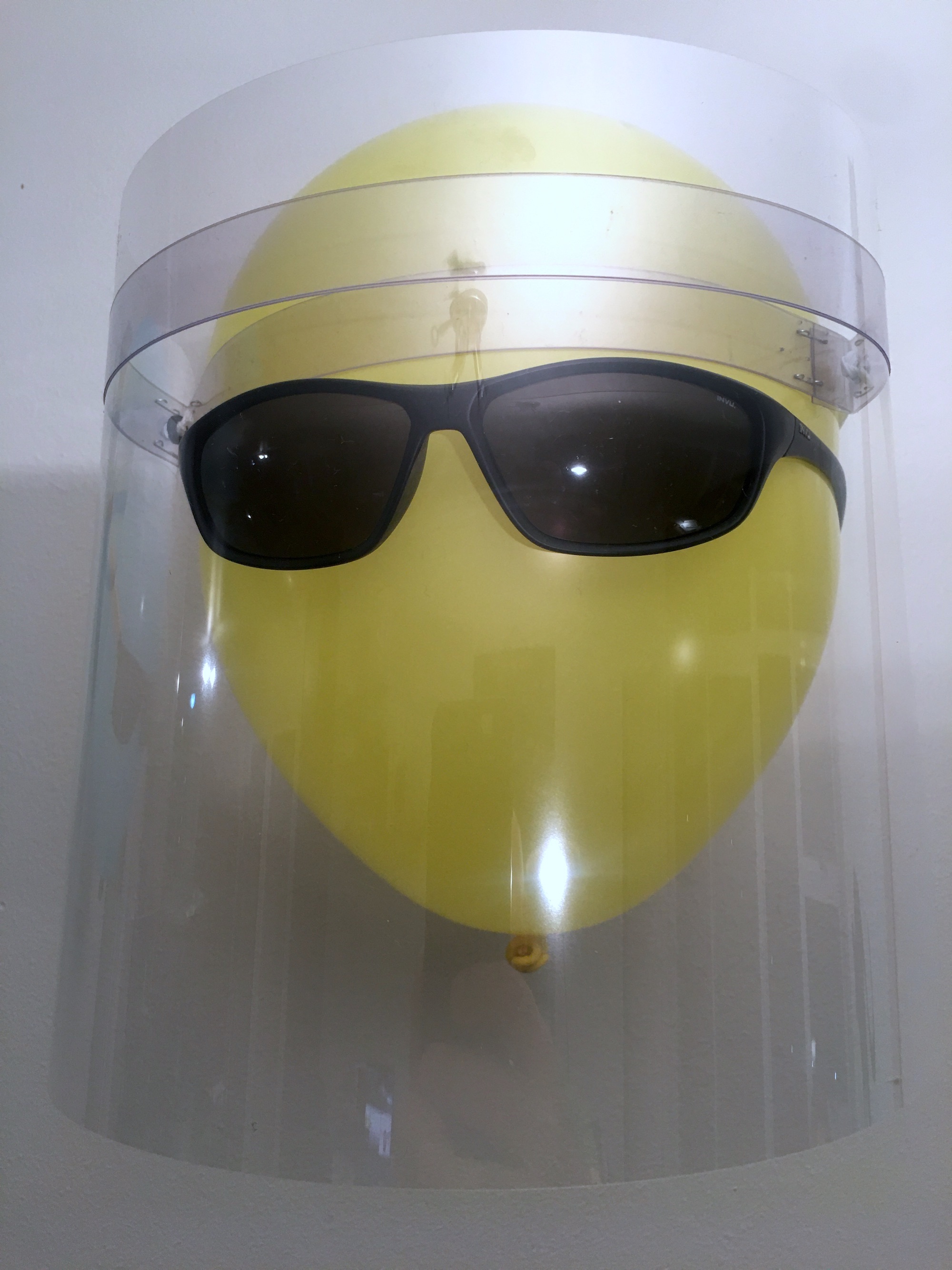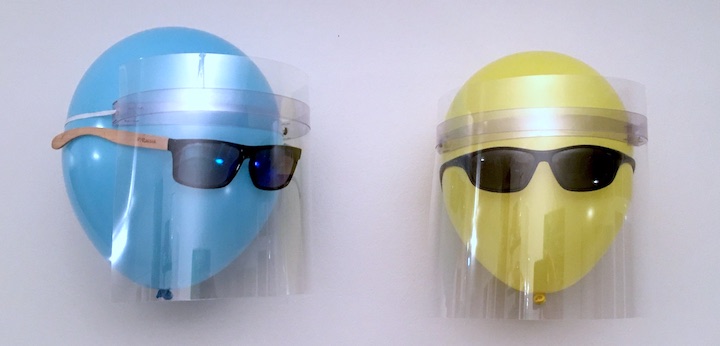QuickShield for Covid-19

A simple, decent quality, rigid Personal Protective Equipment face shield, that you can build yourself for about US $0.15 (or less than half that if buying wholesale), using no special tools, in just minutes. No 3D printers, no lasercutters, no templates to cut complex shapes out of. Just a regular transparency, two strips of plastic (600mmx20mm 400 micron PVC - others might work), a stapler, a ruler and a punch or drill. Unlike many designs, this one is height-adjustable, won't flop around, press against your nose or steam up easily. Recommended mainly for indoor use.
You don't need a factory to make thousands of these quickly - just get a few volunteers together.


Getting started
1. Watch the QuickShield Construction video above.2. Print a template to help you shape the shield correctly: 3. For step-by-step instructions, or a handy place to refer back to for the steps and measurements, read the QuickShield Instructable.
4. If you're going to make many of these, think like you're in a factory. Don't make each shield as a sequence of steps. Rather, perform 100 of each step at a time: cut 100 pieces, then measure and mark all 100, then drill all 100, then bend all 100, and so on. It's much, much faster to work this way. The slowest part is probably cutting the frame pieces into 600mmx20mm - getting them supplied in that size, or having a guillotine will help a lot. If you have to cut them yourself, having two people makes things faster.
FAQ
-
Why "Recommended mainly for indoor use"?
Most of these shields that use thin transparencies don't do well in windy conditions (they can distort and press against your face). If you need to go into the wind, prefer a rigid shield (the 3DPSA design is recommended), and use as thick a visor (transparency) as you can. -
What thickness transparencies can I use for the visor?
QuickShield works best with 100 micron (80 microns should be fine too). This is the typical thickness of overhead projector and printing transparencies as well as some presentation covers (which are usable but tend to be less clear/transparent). You can use 200 micron, but it's heavier, makes the shield hang down a little, and is generally worse in every way (it may do a bit better in windy conditions though).
Please send feedback to paolo @ thefungus.net